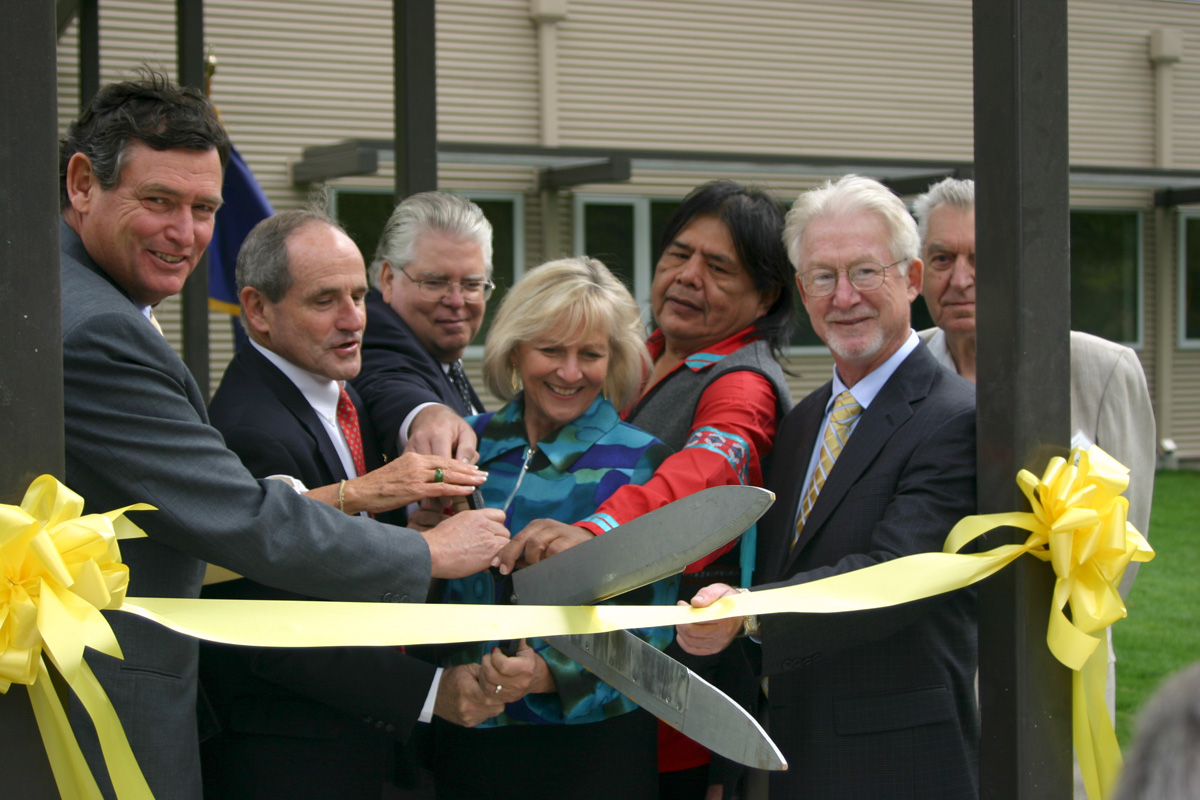Hagerman Genetics Laboratory

Lab Director Shawn Narum describes the features of one of the lab machines that can automatically evaluate nearly 800 samples of genetic material per load.
The Hagerman Fish Culture Experiment Station is a 13,000 square foot facility that houses six analytical laboratories to explore fish genetics and pathology, a 5,500 square foot wet lab to study fish diet and production, and a tissue archive to store fish samples from around the Pacific Northwest for future DNA testing. The current facility was dedicated on September 14, 2006 and took two and a half years to build.
The Hagerman laboratory continues to develop strong and influential programs in the field of conservation, population, and ecological genetics/genomics. Since 2002, work at the Hagerman lab has resulted in more than 40 peer-reviewed publications and presentation of research at numerous scientific conferences and workshops. (See technical reports for more details.)
The Hagerman genetics program includes three primary focus areas of research to support the tribes:
1. Genetic tagging and monitoring of fisheries
As adult salmon and steelhead migrate through the Columbia River, there is a need to understand stock specific abundance and run-timing to assist fisheries management. Through genetic tagging methods known as parentage-based tagging (PBT) and genetic stock identification (GSI), CRITFC has ongoing programs to estimate which stocks are present in the river and those that are harvested by commercial, sport, and tribal fisheries.
2.Genetic effects of hatchery practices
Hatcheries are expected to be used as a recovery and supplementation tool for salmon and steelhead as long as dams and other habitat limitations remain in the Columbia River Basin. Our goal is to better understand how hatchery reform can be implemented to reduce genetic impacts on wild populations.
3.Genetic adaptation to local environments
Salmon and steelhead have the ability to adapt to local environments, and understanding the genetic basis for these adaptations is expected to be useful for reintroduction programs, recovery of stocks, and response to climate change. Studies are underway to investigate the genetic basis for a variety of traits including thermal adaptation, migratory run-timing, smoltification, disease resistance, and age-at-maturity.
In addition to these general areas of research, specific projects are underway to assist with tribal needs such as evaluating genetic diversity of lamprey and sturgeon in the Columbia River Basin.
Dedicating the
Hagerman Laboratory

The dedication and ribbon-cutting ceremony was attended by tribal leaders, University of Idaho representatives, and Idaho Governor Jim Risch.
Partner Links
Hagerman Genetics Lab
Phone: (208) 837-9096
Fax: (208) 837-6047
Contact via email
See staff directory
Address 3059F National Fish Hatchery Road Hagerman, Idaho 83332
Show in Google maps
Genetics Training Workshops
To provide a better understanding of the laboratory techniques involved in the genetics analyses and the inferences that can be made from the results, CRITFC has organized a series of Genetics Training Workshops.
